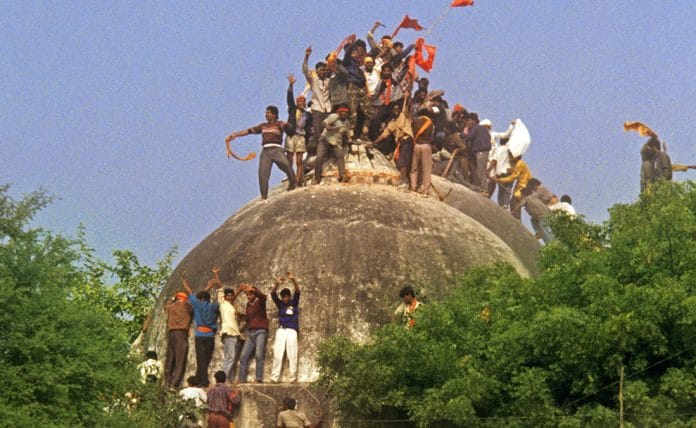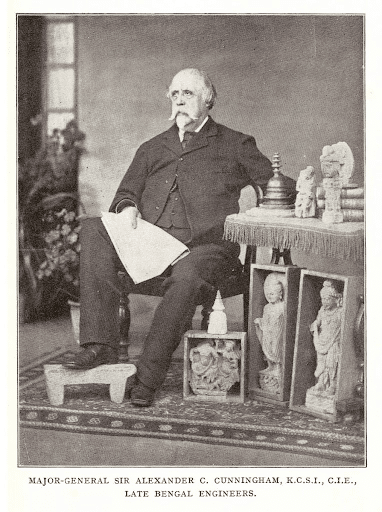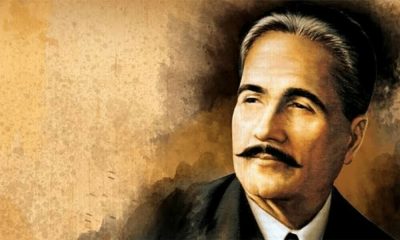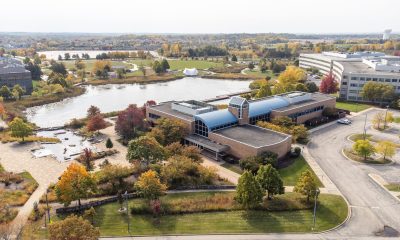#Current Affairs
In The Name of God: A Communal Rupture Sowed By Communal Legacy

Published

At one point of time, there used to be a mosque in Ayodhya. It stood tall and lofty for 470 long years, until a mob of extremist Hindu fanatics came at it with axes and pickets and razed it to the ground. Stemming from the popular belief that it was the birthplace of the mythological figure of the warrior Hindu god called Ram, the act was carried out for the future construction of a temple devoted to him, and one that had to be erected at the same spot where the 16th century mosque had existed for so long.
“All we need for the betterment of life is Lord Ram, and there is no survival without Lord Ram”.
The supporters of the Ram Janmabhoomi cause kept reiterating this loud and clear in Anand Patwardhan’s documentary film Ram ke Naam (In The Name of God), that still serves as the single-most myth busting source centred round the whole dispute. But this very claim itself is based on partial accounts that stem from loose historicity, as depicted in the footage.
Keep supporting MuslimMatters for the sake of Allah
Alhamdulillah, we're at over 850 supporters. Help us get to 900 supporters this month. All it takes is a small gift from a reader like you to keep us going, for just $2 / month.
The Prophet (SAW) has taught us the best of deeds are those that done consistently, even if they are small. Click here to support MuslimMatters with a monthly donation of $2 per month. Set it and collect blessings from Allah (swt) for the khayr you're supporting without thinking about it.
On December 22 1949, Lord Ram was said to have appeared in the dream of a priest in Ayodhya, who along with a few other men installed an idol of the god inside the mosque in the dead of night. The film tracked down one of the priests who had participated in the plan, and identified him as Mahant Ramsevak Das Shastri. He claimed that the erstwhile district magistrate K.K. Nayar was also an organiser of this act and had ensured that Shastri and the others accused were released on bail. Although generally identified as the first breach of communal trust that gradually gave rise to the whole dispute, in truth, this religious fundamentalism has its roots running deeper than most of us fully grasp or acknowledge.
Even at present, about a dozen places in India and Nepal claim to be the potential birthplace of Ram and there is no consensus among Hindu scholars and historians regarding the same. Ayodhya has been housing many Ram temples since the 19th century, and incidentally, quite a lot of them had claimed to be the birthplace of Lord Ram at one point of time or the other. After the construction of the Babri Masjid in 1528 by the Mughal emperor Babur, historic records show that the first instance of communal riots in the area was not before 1855. Sunni Muslims clashed with Bairai Hindus in the area claiming that the temple of Hanumangarhi (for the Hindu mythological figure Lord Hanuman) was built where once stood an already demolished mosque. Nawab Wajid Ali, the then ruler of Ayodhya promptly intervened and made peace, but not before the incident caught the attention of the colonial overlords. This took place just two years prior to the Great Revolt of 1857. It was the first known pan-Indian unified struggle for independence, and one that was founded upon the Hindu-Muslim unity which had been turning into a growing threat for the ruling East India Company. And of all the temples claiming to be the holy birthplace of Lord Ram, the British chose a mosque having Mughal origins to be the designated one for spreading the rumour that Babur had constructed it after destroying what was once a temple housing Lord Ram’s original birthplace.
As this notion started gaining momentum, the British installed a fence on the premise, which led to an arrangement that had the Muslims praying inside the inner court and the Hindus being allowed to use the outer courtyard. This communal understanding and secular practice went on and in peace till 1949, until the breach orchestrated by Nayar occurred.
The 1949 breach then led to communal rifts, which was followed by the mosque being sealed. This marked the beginning of how those in power have been manipulating the masses for centuries, either for ensuring a vote bank, or being mostly fueled by a blind sense of religious fanaticism that made them feel empowered over other religions.
Repeated petitions were filed to open the locks and allow namaz inside the mosque. While the inner court was kept out of bounds, puja was allowed to be carried out in the outer courtyard. As many as four suits were filed between 1950 and 1961 asking for the restoration of the Muslims’ right to pray, none of which were heeded. Twenty years later, the Sunni Waqf Board finally filed a suit for complete possession of the site, and the one which turned out to be the final blow. Hindu groups in turn formed a committee to protect their rights, and the plan to construct the Ram temple was spearheaded, causing the Ram Janmabhoomi movement gaining momentum like never before, with erstwhile Bharatiya Janata Party (B.J.P.) member L. K. Advani giving leadership to the same.
It was no less than a “political game”, according to the court appointed priest Laldas, who was charged with tending to the Ram idol after the mosque was sealed. During his tenure from 1983 to 1992, he was known to have been critically vocal against the whole Ram Janmabhoomi movement and the premeditated conspiracy that was growing around Babri at that time. He was removed from service 9 months prior to the demolition act and was found to be shot dead a year later under mysterious circumstances.
“BJP does not believe in Ram, only in hatred…the Hindu Parishad members have never made a single offering or prayed at the temple even once,” he had told Patwardhan during an interview clip in the documentary.
Surprisingly, none of the subjects that Patwardhan approached in the film knew exactly when Lord Ram was born, or at least even in which century. Not the poor tanner squatting on the ground, not the first year law student brandishing a sword before the march to Ayodhya and not even the saffron clad priest inside the air conditioned Toyota van. But all of them were unwaveringly certain in their belief that Ram’s birthplace was none other than Babri, and how it has been a known fact for many years.
It was December 6, 1992 that witnessed the right wing mobilisation movement carry out the act of political vandalism quite unparalleled in the modern world, leading to subsequent communal riots, and a massacre which the country has not completely recovered from since. Babri was destroyed.
Twenty seven years, varying heartbeats, deadly communal violence acts and the loss of about 5,000 odd lives later, the landmark justice on the Ram Janmabhoomi dispute was delivered. 9th November 2019 was a date that meant too much to too many people. It was a day that either meant the end to so many years of rioting, divisibility and cut-throat communalism, or a further tint in the already widening secular fabric of the nation.
2019 was also the year that Prime Minister Narendra Modi was sworn in for a second term and had implemented a number of administrative decisions that gave BJP’s Hindu supremacist ideology a new momentum and utmost urgency. One of the first things that he did after taking office was revoke the Article 370 of the Indian Constitution on August 5, 2019, which had so far granted the internationally disputed Muslim dominated region of Kashmir a special status independent of Indian jurisdiction. The abrogation allowed Kashmir to be reinvaded by a strong Indian military, annexed to the Indian subcontinent and put under complete curfew with an internet blackout. And exactly one year later, Prime Minister Modi is about to lay the foundation stone for the newly constructed Ram temple in Ayodhya on the site of the demolished mosque on August 5, 2020, as thanks to the landmark verdict on the decades-spanning historic wound that has completely redefined the politics of the country, the forces responsible for the demolition had found themselves in complete legal possession of the land.
For many blinded by irrational faith and hyper nationalism, the judgement reinstated the inherent vice of fanatic Hindutva ideology in the sense that their religion is all superior, and one that fuels the necessity to construct the Ram temple at the very spot of the Babri Masjid. But to others still believing in the idea of the independent India that awoke at the stroke of the midnight hour on 15th August 1947, the judgement could have very well been a bigger, and more dangerous rupture in the democratic and secular pillars of the country than the actual act of the demolition itself.
The current chief minister of Uttar Pradesh, who was charged with overseeing the construction of the temple had gone on record as early as 2017 during a pre-election campaign to promise a Ram Mandir:
“Agar Samajwadi Party jeetegi to Karbala-kabristan banega, jabki Bhajapa ki Sarkar banegi toh Ayodhya mein Ram mandir banega.”
30 years ago it was L.K. Advani who had promised that Mandir wahi Banega and today, it is Yogi Adityanath, the third face in line on the saffron political firmament, who is delivering on this promise.
Vikas Pathak, who is a professor at the Asian College of Journalism in Chennai, said that this is Hindutva’s true and unalloyed form, one that was supposedly hidden beneath layers of political exigencies for so many years leading up to this. This claim is further supported by an independent multimedia journalist in Kashmir, who said he feels the same due to the obvious choice of the date of inauguration. Requesting to be anonymous, he expressed his thoughts on how this is more of a planned move than a mere coincidence, and one which gives out a clear message.
“The fact that it’s happening on the anniversary of the repeal of Kashmir’s autonomy, accentuates the importance that the Modi government places on its aggressive pursuit of a Hindu nationalist agenda”, also augmented Michael Kugelman in his comment on the matter. He is senior associate of the Wilson Center and the deputy director of its Asia Program.
Just like Jai Shree Ram, this Mandir agenda too had been normalised into one which sounded like a clarion call for battle. In Patwardhan’s film, an unnamed Congress politician held a campaign where he asked the Vishwa Hindu Parishad that if indeed a Ram temple should be built, why could it not be anywhere else in the city, as Ayodhya is such a large place.
“I am amazed at this stubbornness that they will build the temple at the very same spot! And that too, only after destroying the mosque… He (Advani) can easily build a temple anywhere in Ayodhya, but please do not insist that this can only be possible by demolishing an existing mosque. I want to promise that the temple will most definitely be built, but the mosque must also remain.”
As we went on to see in the film, and even twenty seven years down the line, it was firmly decided that Mandir wahi banega, and one existing holy site was destroyed to give rise to another. Come November 2019, the temple plan gets sanctioned by the Supreme Court of India as well, ironically granting the Sunni Waqf board an alternate piece of land to construct their mosque instead.
While the 5-judge bench lay claim to the demolishing act accepting it as a crime, and while they also accepted that the installation of the idols inside the mosque was an act of desecration, it also gave the land over to those who desecrated it at the same time. A judge on the bench had called it “one of the most important cases in the world,” but when the perpetrators of what the Supreme Court has openly identified as a crime find themselves to be the main beneficiaries of the judgement, it brings to question how just the verdict actually is.
Quite bizarrely, the court had declared that while there was some evidence of Hindus worshipping on the disputed site, no such documentary evidence could be found in the case of Muslims until before 1857.
“The mosque was built in 1528, and the area was under Mughal occupation till 1722. Then it was ruled by Nawabs, and finally annexed by the British in 1856. It must be self-evident that during this entire period of being under Muslim rule, Muslims were offering namaz inside the mosque and not the other way round”, said a Kashmiri student currently studying at Jadavpur University in Kolkata on the condition of anonymity, adding how such a reasoning based on “balance of probabilities” as one of the reasons to give it to the Hindu side is itself one of inequality.
On the other hand, the judgement also referred to a 574 pages long report published by the Archaeological Survey of India (ASI) 15 years ago, which claimed that Babri Masjid was not built on vacant land. Reading the unanimous judgement and considering the report valid on the assurance of being scientifically tested, Chief Justice of India, Ranjan Gogoi who was leading the bench said:
“There was a structure underlying the disputed structure. The underlying structure was not an Islamic structure.”
While the court relied heavily on this ASI report, independent archaeologists who observed the site on behalf of the Sunni Waqf board differed entirely with the ASI findings. While the six month long court ordered investigation did reveal the existence of an underlying structure beneath the mosque, eminent archaeologists Supriya Varma and Jaya Menon believe that the evidence collected on their part do not support the claims made by ASI.
Their report read: “underneath the Babri, there existed older mosques.”
They further added that even if the underlying structures were not of Islamic origin, they closely resembled Buddhist stupas at the most, and in no way anything remotely close to a Hindu temple. This particular claim is in turn also supported by the archaeological surveyor Alexander Cunningham, who was the first individual to survey Ayodhya (around 1862-63), and was known for his interest in tracking down and identifying places associated with Buddhism.

Had India as a country boasted of a very robust and strong judicial institution, such an incident would not have been dragged all the way from 1949 to 2019, let alone pave the way to constructing a temple on the disputed land. December 6, 1992 should have been permanently brought an end to it with strict actions being taken against the perpetrators. While the B.J.P. indeed is directly linked to the whole incident, the Congress government led by Rajiv Gandhi allowed the locks to be opened in the 1980s. Following the demolition, the Congress Prime Minister Narsimha Rao allowed them to get away with the violence in 1992. And in 2019, the Supreme Court judges have done the same.
Ayodhya, for more than a quarter of a century, had been turned into a place of cynical and political revanchism. And thrust between this politics of a loosely manufactured historicity aiming to upend the Republic of secularism by replacing it with a system running on Hindutva ideology, were those that represented what India truly stands for. Of the numerous subjects that Patwardhan interviewed, both Hindus and Muslims, most of them unanimously awaited, and wanted peace. Something that was so easy to understand for someone who lived a simple life of an ironmonger, belonging to the low Bishkarma caste, was at the same time completely unimaginable to those amassing trucks and weapons to demolish the mosque:
“Once it exists, it is wrong to break. If someone tried to break our temple, would we allow it? We’d say go build your mosque elsewhere.”
Zahir Adil, the lead on Save India From Fascism Project of the human rights organization Justice For All also expressed a similar sentiment, saying how he would have actually welcomed it if the temple was not built after illegally destroying a historic mosque.
“Apart from being a day that RSS criminals are rewarded with a new temple after perpetuating systemic violence in India, 5th August 2020 also goes down in history as the day that the words Jai Shree Ram will be displayed in the iconic Times Square as the Prime Minister will lay the foundation stone for a Ram Temple on the site of the demolished mosque”, informed Masood Rab, spokesperson of Coalition of Americans for Pluralism in India (CAPI). It is one among the coalition of organizations that have refused to carry forward the programming by the pro-Modi group in Times Square.
The RSS, or the Rashtriya Swayamsevak Sangh, being the parent organization of the current ruling party in India has its roots in pre-Independence times and were also known for openly supporting Hitler’s Nazi agenda. They were banned as many as four times when India was ruled by the national Congress, but it has now become the de-facto power under BJP rule, with Modi himself being a known RSS member.
Indian American Muslim leaders, as well as human rights organizations, having categorically denounced this display of religious bigotry has called for a day long protest in the iconic Times Square from 8 AM, asking for this display of vehement arrogance to be stopped. Those like Adil and Dr. Shaik Ubaid (President of the Indian Minorities Advocacy Network) have also expressed concern on how the proponents of this fascist ideology have become so confident that they are celebrating an illegal and bloody act in the middle of Times Square, and for the entire world to see. But others like Kugelman expect, and have pointed out that while there will be messages in Times Square blaring out communal rhetoric, there may also be messages expressing solidarity for Kashmiris.
“It is perhaps fitting, in this globalized era, if the incredibly polarizing Kashmir issue plays out under the bright lights of Times Square”, said Kugelman over a brief electronic conversation, but added how this juxtaposition is also extremely divisive within the country on the whole.
The mandatory in this case seems more like a political campaign trick than anything to do with actual Hinduism, and essentially a symbiotic Displace perpetrated by a fascist government.
It wouldn’t be wrong to say that this could be the rise of divisive Hindu supremacy as never seen before. In all its entirety, the day of August 5, 2020 marks the end of an era and the possible beginning of a new one. It detriments the idea that our founding forefathers had envisioned for the nation, and while we may not like it at the same time, this is essentially a new India that is emerging for everyone to see – one that is a land of strident Hindutva and religious dissonance at the forefront.
LINK to the documentary: https://www.youtube.com/watch?v=GMT18TMNQbY
Keep supporting MuslimMatters for the sake of Allah
Alhamdulillah, we're at over 850 supporters. Help us get to 900 supporters this month. All it takes is a small gift from a reader like you to keep us going, for just $2 / month.
The Prophet (SAW) has taught us the best of deeds are those that done consistently, even if they are small. Click here to support MuslimMatters with a monthly donation of $2 per month. Set it and collect blessings from Allah (swt) for the khayr you're supporting without thinking about it.
Srijita Datta is a post-graduate student of English Literature at Jadavpur University, and a reporter based out of Kolkata, India. Her work has appeared in The Statesman, The Quint, The Wire, and Firstpost, among others. She can be found on Twitter as @srijitad_.


An Iqbalian Critique Of Muslim Politics Of Power: What Allamah Muhammad Iqbal’s Writings Teach Us About Political Change

Muslim Book Awards 2025: Finalists

Far Away [Part 3] – Wounded

Darul Qasim College Given License To Grant Master’s Degrees

MM Wrapped – Our Readers’ Choice Most Popular Articles From 2025

Restoring Balance In An Individualized Society: The Islamic Perspective on Parent-Child Relationships

Ahmed Al-Ahmed And The Meaning Of Courage

AI And The Dajjal Consciousness: Why We Need To Value Authentic Islamic Knowledge In An Age Of Convincing Deception

Moonshot [Part 32] – FINAL CHAPTER: A Man On A Mission

Far Away [Part 1] – Five Animals

[Dhul Hijjah Series] Calling Upon the Divine: The Art of Du’a (Part 1)

IOK Ramadan 2025: Four Steps | Sh Zaid Khan

IOK Ramadan 2025: Do Your Best | Sh Zaid Khan

IOK Ramadan 2025: Giving Preference to Others | Sh Zaid Khan

IOK Ramadan 2025: Which Group Are We In? | Sh Zaid Khan
Trending
-
#Life1 month ago
Op-Ed – When Islamophobes Try To Intimidate Us, They Underestimate Our Resolve: A Call to Stand With America’s Muslim Students
-
#Current Affairs1 month ago
Who’s Afraid Of Dr. Naledi Pandor? – Zionist Panic and a Visa Revoked
-
#Life1 month ago
Owning Our Stories: The Importance Of Latino Muslim Narratives
-
#Life1 month ago
The Hunger Crisis: Reflections Of An American Muslim











Tamanna Majed
August 6, 2020 at 9:53 AM
Hindu religion/philosophy is a made up stories of many goddess like Greek mythology. How do intelligent people think it to be a real religion, to the extent of destroying century old mosque.
Many countries claim this mythology story is based in their county – Nepal and in India… “birthplace of the mythological figure of the warrior Hindu god called Ram”
Ahmed
August 6, 2020 at 11:40 AM
Ms Tamanna
Lets not criticize Hinduism and their beliefs. The evil here is this radical right wing that has hijacked Hinduism. They are just permanently angry. Today they are angry with Muslims, Christians. Tomorrow they will find enemies eithin themselves and burn everything down. Poor supporters are in for a shock